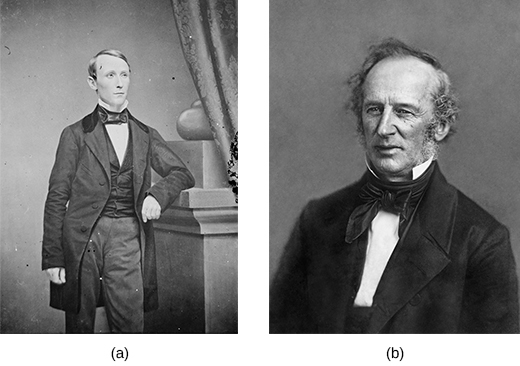| << Chapter < Page | Chapter >> Page > |
Efforts to take Cuba continued under President Franklin Pierce, who had announced at his inauguration in 1853 his intention to pursue expansion. In 1854, American diplomats met in Ostend, Belgium, to find a way to gain Cuba. They wrote a secret memo, known as the Ostend Manifesto (thought to be penned by James Buchanan, who was elected president two years later), stating that if Spain refused to sell Cuba to the United States, the United States was justified in taking the island as a national security measure.
The contents of this memo were supposed to remain secret, but details were leaked to the public, leading the House of Representatives to demand a copy. Many in the North were outraged over what appeared to be a southern scheme, orchestrated by what they perceived as the Slave Power—a term they used to describe the disproportionate influence that elite slaveholders wielded—to expand slavery. European powers also reacted with anger. Southern annexationists, however, applauded the effort to take Cuba. The Louisiana legislature in 1854 asked the federal government to take decisive action, and John Quitman, a former Mississippi governor, raised money from slaveholders to fund efforts to take the island.
Read an 1860 editorial titled Annexation of Cuba Made Easy from the online archives of The New York Times . Does the author support annexation? Why or why not?
Controversy around the Ostend Manifesto caused President Pierce to step back from the plan to take Cuba. After his election, President Buchanan, despite his earlier expansionist efforts, denounced filibustering as the action of pirates. Filibustering caused an even wider gulf between the North and the South ( [link] ).
![A cartoon entitled The “Ostend Doctrine” shows James Buchanan being robbed by four thugs, all of whom use specific phrases from the Ostend Manifesto as they relieve Buchanan of his belongings. For example, one says, “Come let’s have that ticker [watch] or you’ll find that ‘Considerations exist which render delay’ in doing so ‘Exceedingly dangerous’ to your head.”](/ocw/mirror/col11740/m50068/CNX_History_12_04_Ostend.jpg)
Cuba was not the only territory in slaveholders’ expansionist sights: some focused on Mexico and Central America. In 1855, Tennessee-born William Walker, along with an army of no more than sixty mercenaries, gained control of the Central American nation of Nicaragua. Previously, Walker had launched a successful invasion of Mexico, dubbing his conquered land the Republic of Sonora . In a relatively short period of time, Walker was dislodged from Sonora by Mexican authorities and forced to retreat back to the United States. His conquest of Nicaragua garnered far more attention, catapulting him into national popularity as the heroic embodiment of white supremacy ( [link] ).

Why Nicaragua? Nicaragua presented a tempting target because it provided a quick route from the Caribbean to the Pacific: Only twelve miles of land stood between the Pacific Ocean, the inland Lake Nicaragua, and the river that drained into the Atlantic. Shipping from the East Coast to the West Coast of the United States had to travel either by land across the continent, south around the entire continent of South America, or through Nicaragua. Previously, American tycoon Cornelius Vanderbilt ( [link] ) had recognized the strategic importance of Nicaragua and worked with the Nicaraguan government to control shipping there. The filibustering of William Walker may have excited expansionist-minded southerners, but it greatly upset Vanderbilt’s business interests in the region.
Walker clung to the racist, expansionist philosophies of the proslavery South. In 1856, Walker made slavery legal in Nicaragua—it had been illegal there for thirty years—in a move to gain the support of the South. He also reopened the slave trade. In 1856, he was elected president of Nicaragua, but in 1857, he was chased from the country. When he returned to Central America in 1860, he was captured by the British and released to Honduran authorities, who executed him by firing squad.
The decade of the 1850s witnessed various schemes to expand the American empire of slavery. The Ostend Manifesto articulated the right of the United States to forcefully seize Cuba if Spain would not sell it, while filibuster expeditions attempted to annex new slave states without the benefit of governmental approval. Those who pursued the goal of expanding American slavery believed they embodied the true spirit of white racial superiority.

Notification Switch
Would you like to follow the 'U.s. history' conversation and receive update notifications?